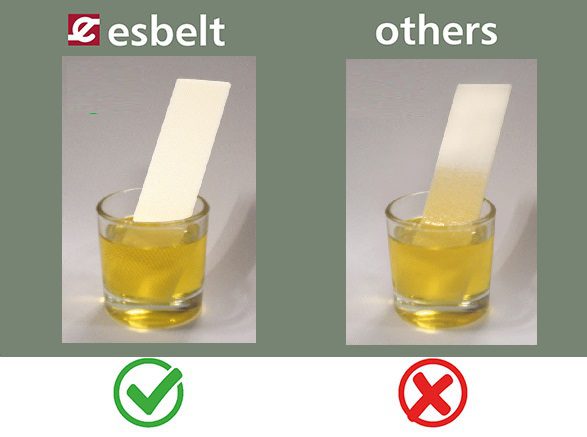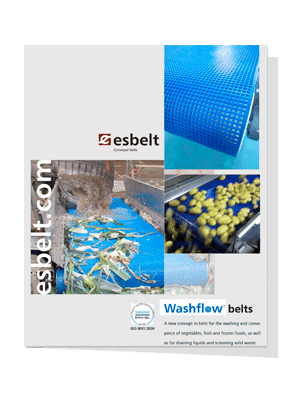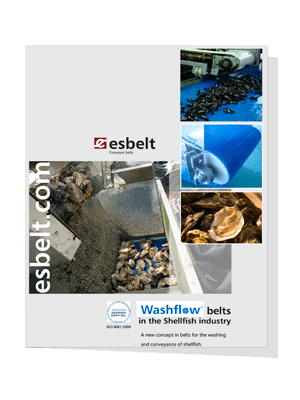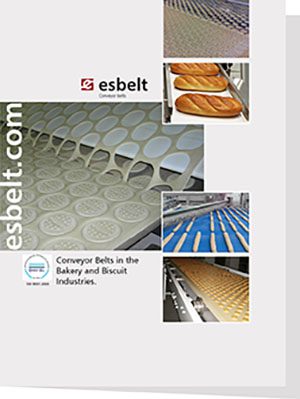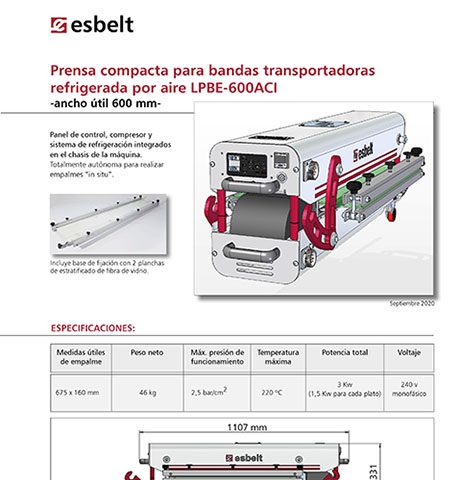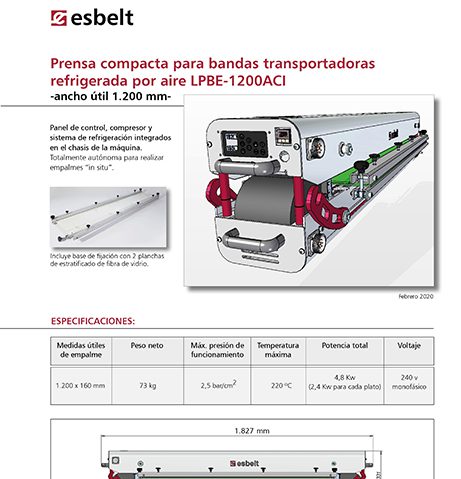Wick Resistant Conveyor Belts
Wicking occurs when a fabric soaks up oils and fluids quickly like the wick of an oil lamp. Esbelt´s wick resistant conveyor belts prevent the absorption of water and oils, enhancing the hygiene in food applications. Even though the bottom cover fabric is not covered by thermoplastic, its wick resistant property protects the fabric and enhances hygiene in food applications.
The absorption of liquids or oils by the bottom fabric of the conveyor belt can bring about problems like delamination of plies and edge separation. Pathogenic microorganisms may also penetrate the fabric through capillarity, allowing them to flourish off the surfaces of the belts, thus making the belts difficult to clean.
Esbelt´s low capillarity belts are made with a specially treated fabric that are resistant to fluid penetration to solve these problems. These are belts with waterproof ´´W.impreg´´ or ´´WP´´ fabrics. They pass the Wicking Test G11, a concept defined in an FDA guideline in June 2011 under chapter G, section 11. According to the test, conveyor belts with fabric support should be dipped into water mixed with a food colorant: color penetrations higher than 1mm are not acceptable.
Conveyor belts in our thermoplastic polyurethane TPU Standard & Premium series are made with wick resistant fabrics. Apart from having waterproof fabrics, belts in our TPU Premium series are made with thermoplastic polyurethane with anti-hydrolysis properties.
